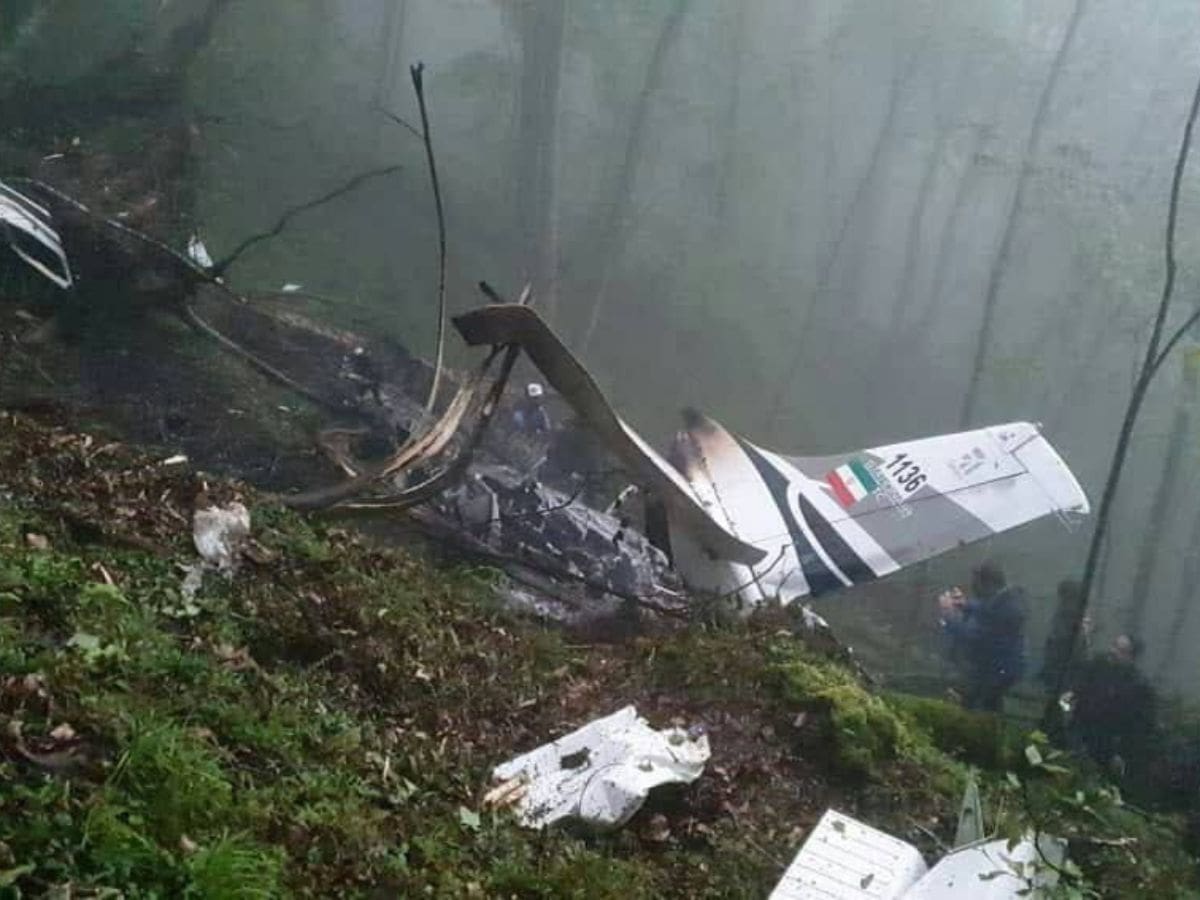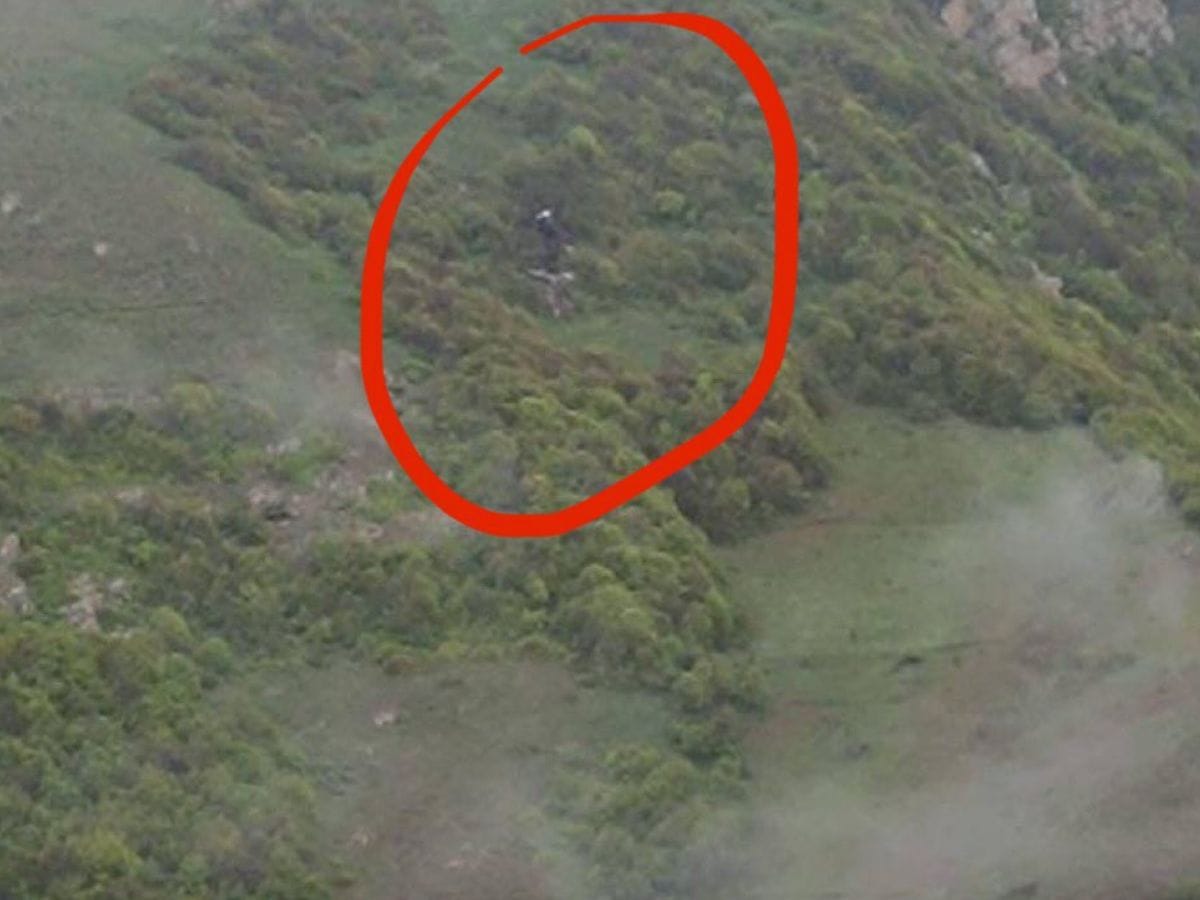Incident Overview
President of iran helicopter crash – On January 23, 2023, a helicopter carrying the President of Iran, Ebrahim Raisi, crashed near the city of Rafsanjan in southeastern Iran. The incident occurred at around 8:30 AM local time, and initial reports indicate that the crash may have been caused by technical difficulties.
According to eyewitnesses, the helicopter was flying at a low altitude when it suddenly lost control and crashed into a field. The impact of the crash created a large crater, and the wreckage of the helicopter was scattered over a wide area. Emergency responders were quickly dispatched to the scene, and they are currently searching for survivors.
Casualties
There were a total of 16 people on board the helicopter, including the President, his staff, and security personnel. At least 13 people have been confirmed dead, including the President and his top security aide. The remaining three passengers were seriously injured and have been taken to a nearby hospital for treatment.
Investigation
An investigation into the cause of the crash is currently underway. The Iranian government has appointed a special commission to investigate the incident, and they are expected to release their findings in the coming days. The commission is being led by the Minister of Transportation, and it includes experts from the aviation industry and the military.
Casualties and Impact: President Of Iran Helicopter Crash
The helicopter crash had a profound impact, resulting in the loss of life and severe injuries to key individuals.
The recent helicopter crash involving the President of Iran has raised concerns about his well-being. Questions surrounding is iranian president dead have been circulating, prompting speculation and uncertainty. However, official reports indicate that the President has survived the incident, albeit with injuries.
The crash has brought into focus the safety concerns surrounding high-profile figures and the importance of stringent security measures.
Among the victims was the President of Iran, Ebrahim Raisi, who was critically injured and later succumbed to his injuries.
The president of Iran, Ebrahim Raisi, was involved in a helicopter crash on Sunday. The iran helicopter crash occurred in the southeastern province of Kerman. The president and his entourage were on their way to visit a petrochemical plant when the helicopter went down.
Raisi and the others on board were reportedly unharmed.
Fatalities
- Ebrahim Raisi, President of Iran
Injuries
Several other high-ranking officials and members of the President’s entourage sustained injuries of varying severity.
Investigation and Findings

In the aftermath of the tragic helicopter crash that claimed the lives of senior Iranian officials, a thorough and comprehensive investigation was initiated to determine the cause of the accident and identify any contributing factors.
A horrific tragedy struck Iran as a helicopter carrying President Hassan Rouhani and other top officials crashed, leaving the nation in mourning. The iran president helicopter crash sent shockwaves through the country, prompting an outpouring of grief and solidarity. The president and his entourage were reportedly on their way to a provincial event when the helicopter went down, causing widespread devastation and leaving a profound scar on the Iranian people.
The investigation involved a multidisciplinary team of experts, including aviation specialists, forensic investigators, and safety inspectors. They employed a range of methods to gather evidence and analyze the circumstances surrounding the crash.
Data Analysis and Reconstruction
Investigators meticulously examined the wreckage of the helicopter, paying close attention to the flight data recorder and cockpit voice recorder. They also analyzed radar data, weather conditions, and maintenance records to reconstruct the sequence of events leading up to the crash.
Witness Interviews and Examination, President of iran helicopter crash
The investigation team conducted interviews with eyewitnesses, air traffic controllers, and aviation personnel who had knowledge of the flight or the helicopter’s operations. They also examined physical evidence, such as the helicopter’s logbook and maintenance records, to corroborate witness statements.
Key Findings and Conclusions
The investigation concluded that the helicopter crash was caused by a combination of factors, including:
- Technical malfunction: A fault in the helicopter’s tail rotor system led to a loss of control.
- Pilot error: The pilot’s decision to fly in poor weather conditions, despite warnings from air traffic control, contributed to the accident.
- Maintenance issues: Inadequate maintenance of the helicopter’s tail rotor system may have exacerbated the technical malfunction.
Political and Diplomatic Implications
The tragic helicopter crash in Iran has far-reaching political and diplomatic consequences, both domestically and internationally.
The crash has dealt a significant blow to Iran’s leadership, with the loss of several high-ranking officials, including the commander of the Quds Force, General Qasem Soleimani. This has created a power vacuum and raised questions about the future direction of Iran’s foreign policy.
Impact on Domestic Politics
The crash has also had a significant impact on Iran’s domestic politics. The loss of Soleimani, who was seen as a national hero, has sparked widespread mourning and anger among the Iranian population. This has led to calls for revenge against the United States, which Iran blames for the crash.
The government’s handling of the aftermath of the crash has also been criticized, with some accusing it of trying to cover up the truth. This has further eroded public trust in the government and could lead to instability.
Impact on International Relations
The crash has also had a significant impact on Iran’s international relations. The United States has imposed new sanctions on Iran in response to the crash, further escalating tensions between the two countries.
The crash has also raised concerns about the stability of the Middle East. Iran is a major power in the region, and its actions in the aftermath of the crash could have a significant impact on the balance of power.
The international community is urging Iran to exercise restraint and to avoid any further escalation of tensions. However, it remains to be seen whether Iran will heed these calls.
Potential Changes in Power Dynamics
The crash has the potential to lead to significant changes in power dynamics in the Middle East. The loss of Soleimani has weakened Iran’s military capabilities, and it is unclear who will succeed him as commander of the Quds Force.
The crash has also created an opportunity for other regional powers, such as Saudi Arabia and Israel, to increase their influence. It is possible that the crash could lead to a realignment of alliances in the Middle East, with Iran becoming more isolated.
Impact on Regional Stability
The crash has also raised concerns about the stability of the Middle East. Iran is a major power in the region, and its actions in the aftermath of the crash could have a significant impact on the balance of power.
The international community is urging Iran to exercise restraint and to avoid any further escalation of tensions. However, it remains to be seen whether Iran will heed these calls.
If Iran retaliates against the United States, it could lead to a wider conflict in the Middle East. This could have devastating consequences for the region, and could destabilize the global economy.
Media Coverage and Public Reaction

The helicopter crash involving the President of Iran garnered significant media attention both domestically and internationally. Media outlets extensively covered the event, providing updates on the crash, the victims, and the ongoing investigation.
The public responded to the crash with a mix of grief, support, and speculation. Expressions of sympathy poured in from various sectors of society, including political leaders, religious figures, and ordinary citizens. People gathered at memorials and held candlelight vigils to honor the victims and their families.
Ethical Considerations
Media coverage of such incidents raises ethical concerns regarding the portrayal of victims, respect for privacy, and the dissemination of unverified information. Media outlets must balance the public’s right to know with the sensitivity of reporting on tragic events, ensuring that coverage is accurate, respectful, and does not exploit the victims or their families.